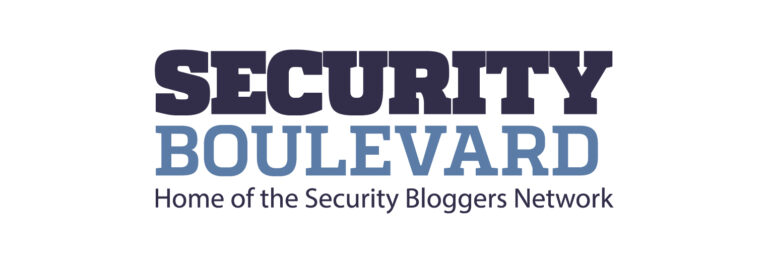Source: securityboulevard.com – Author: Team Nuspire
Security posture is a term often mentioned in cybersecurity, with businesses often told to improve or maintain a robust security posture. With the onset of 2024, now is a better time than ever to take stock of your company’s security posture and plan to strengthen it. This article clarifies what a security posture is and provides some tips on performing an effective security posture assessment.
Security Posture Explained
A security posture is the overall security status of an organization. Posture is about the strength of defenses against cyber threats and relates to the readiness to prevent, detect and respond to them. It encompasses the following elements:
- Security measures like firewalls, antivirus software, intrusion detection systems, encryption and other technical controls.
- Policies and procedures that outline guidelines and practices for handling data, managing security incidents, and ensuring business continuity in the event of a cyber threat causing a system outage.
- Levels of employee security awareness about threats and levels of practicing good security hygiene.
- Preparedness and efficiency in addressing and mitigating security incidents.
Security postures can weaken or strengthen over time due to many complex factors. There is almost always room for improvement or refinement, especially when you look at a 2022 survey in which 50% of CISOs globally answered that they felt their organization was unprepared to handle a cyberattack.
Characteristics of Strong and Weak Security Postures
Some indicators of a weak security posture include:
- A reactive approach that addresses security threats after they have occurred, with minimal proactive measures.
- Poor security awareness and low-quality or lack of employee security training.
- An absence of documented guidelines for things like managing data and responding to security incidents.
- Slow or ineffective detection of and response to security breaches.
A robust security posture is proactive, covers all aspects of security across the organization, and regularly assesses and updates security measures to adapt to evolving threats. Cybersecurity frameworks like NIST allude to security posture by describing different cyber maturity levels. The highest tier, Optimized, describes organizations that show continuous improvement and adaptation to new threats, advanced risk management and security integration.
Performing a Security Posture Assessment
So, how do you know what your security posture looks like? This is where performing a regular assessment at the end of the year or the start of a new year comes as a worthwhile project. Here are some tips to perform a thorough security posture assessment that gives a clear overall picture of where your company stands:
- Use established cybersecurity frameworks like NIST, ISO 27001 or CIS Controls as a guide. These frameworks provide structured approaches for assessing security posture and are widely recognized.
- Review the existing security controls and policies in place. This includes technical measures (like firewalls, encryption and intrusion detection systems), as well as administrative controls (like access policies, training programs and incident response plans).
- Consider penetration testing to simulate cyberattacks and test the resilience of your security measures. This can reveal vulnerabilities that might not be apparent through a standard review of systems and policies.
- Ensure that your security posture has your organization in compliance with relevant laws, regulations and industry standards. Non-compliance regularly results in hefty fines, although it also shows vulnerability to cyber threats.
- Involve multiple departments (like HR, legal and operations) in the assessment process to get a holistic view of the security posture and understand how security measures impact different areas of the business.
- Document the findings of the assessment in a detailed report. This should include identified vulnerabilities, areas of non-compliance and recommendations for improvement.
- Look at security practices and case studies in different industries and consider how what they do could be adapted to strengthen the overall security of your business.
- Analyze security incidents over the last 12 months, both within your organization and in similar industries, to identify patterns or recurring vulnerabilities that may still be relevant.
Big Wins for Strengthening Security Postures
While the tweaks and improvements to make will vary among each individual business, there are some general big difference-makers that can improve the security posture of any company. Here are four to consider:
- Adopting a zero trust security model, which operates on the principle of “never trust, always verify.” This approach assumes that threats can exist both outside and inside the network so that no user, service or app gets trusted by default.
- Prioritize vendor risk management to ensure that third-party vendors and partners adhere to strict cybersecurity standards so you can reduce the possibility of being hit by increasingly prevalent supply chain attacks.
- Shift to ongoing, much more regular education and training for employees on cybersecurity best practices, recognizing phishing attempts and securely handling sensitive information.
- Leverage outside help to address security talent shortages by using managed security services like managed detection and response.
Overall, security posture is something you should always be looking to improve. And once each year, take a good hard look at where your company is at in terms of the overall strength of its security program.
If you need help performing a security posture assessment, Nuspire’s consulting services can help you understand the maturity of your cybersecurity program and optimize your security investment. You’ll get a clear picture of where you are now and a gap analysis to identify shortfalls in all security areas.
The post What is Security Posture? appeared first on Nuspire.
*** This is a Security Bloggers Network syndicated blog from Nuspire authored by Team Nuspire. Read the original post at: https://www.nuspire.com/blog/what-is-security-posture/
Original Post URL: https://securityboulevard.com/2024/01/what-is-security-posture/
Category & Tags: Security Bloggers Network,Blog – Security Bloggers Network,Blog




















































